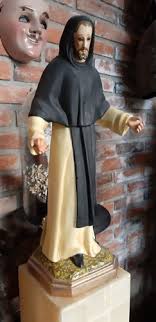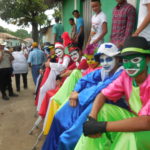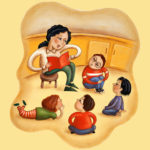This Friday’s mission hero is a man who did his missionary work from the front door of his friary. His name was Juan Macías.
Juan de Arcas y Sánchez was born was born on March 2, 1585 in Ribera del Fresno, Extremadura, Spain. Juan’s parents were poor farmers who died when Juan and his sister Agnes were very young. Because their uncle raised them, they took his last name as their own – Macías. Juan’s uncle trained him to be a shepherd.
When he was 16-years old, Juan met a Dominican friar in a neighboring village, and he began considering one day becoming a friar himself.
At the age of 25, Juan went to work for a rich businessman who offered Juan the opportunity to go to South America. Juan jumped at the chance and in 1610, he left Spain and landed at Cartagena (Colombia) and eventually made his way to Peru.
In Peru, he worked on a cattle ranch and did other jobs, and he saved his money. He made his way to Lima, Peru where he would spend the rest of his life.
In January of 1622, Juan entered the Dominican friary of St. Mary Magdalene in Lima as a lay brother. He gave all of his savings to the Order. One year later, in January of 1623, he took his vows. Interestingly, he was a contemporary of another lay Dominican brother – Martin de Porres. Martin, however, was in a different friary, that of the Priory of Santo Domingo, also known as Holy Rosary. Both men were porters, both did nursing, and both became saints.
In his priory, Juan served as the porter or doorkeeper until his death. Like Martin, Juan showed the world how important the role of porter could be. Though he would have loved to live more as a hermit, he accepted his role of greeting the public with grace, energy, and joy.
Soon, the doors of the priory became a gathering place for the sick, poor, and needy of the city. He not only nursed the sick who came to him, he made sure all who came to him in need would get food and clothes if they needed them.
Brother Juan’s nursing care was not limited to the poor, and it was not limited to biophysical nursing. He also did psychosocial nursing for the rich and famous who would come to him for counseling.
To help him in his work, Brother Juan trained a donkey to “make rounds” in the city for him. After putting large panniers on the donkey, the donkey would go from store to store, house to house. People became used to the donkey and would put food, wine, clothes, money, or whatever they had to offer, in the panniers. If the people didn’t show up at the door of their house or business, the donkey would make a lot of noise to get their intention. After collecting what it could, the donkey would return home to Brother Juan to deliver its collection.
In Juan’s day, many people attributed healing miracles to him – not only from his nursing care, but also from his prayers. After his death, miracles continued to be attributed to him. It is little wonder that Juan became known as “the father of the poor” in Peru.
Brother Juan died on September 16, 1645, and all of Lima mourned his loss.
Pope Paul VI canonized Juan Macías in 1975.
Saint Juan Macías’ feast day is September 16.



